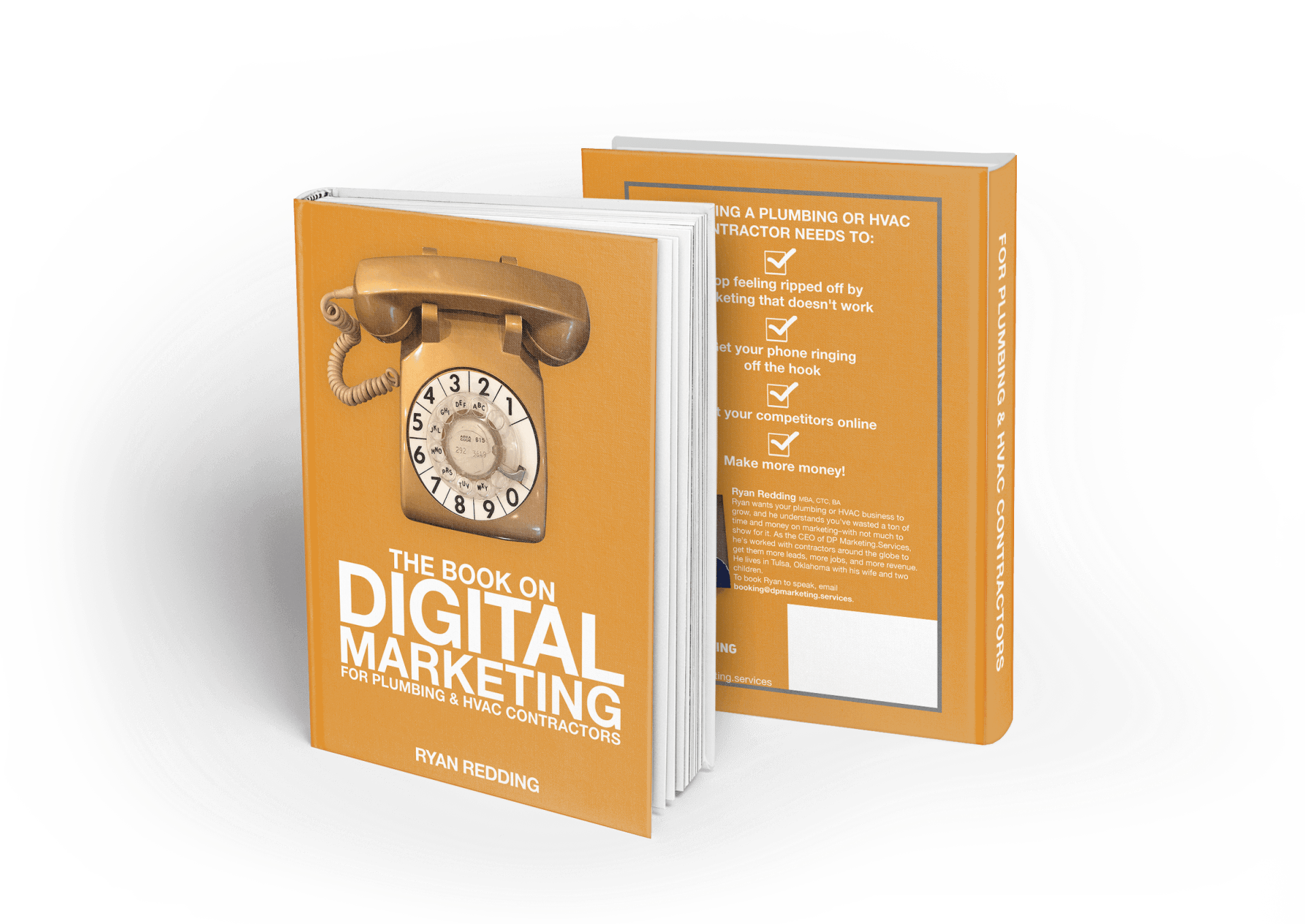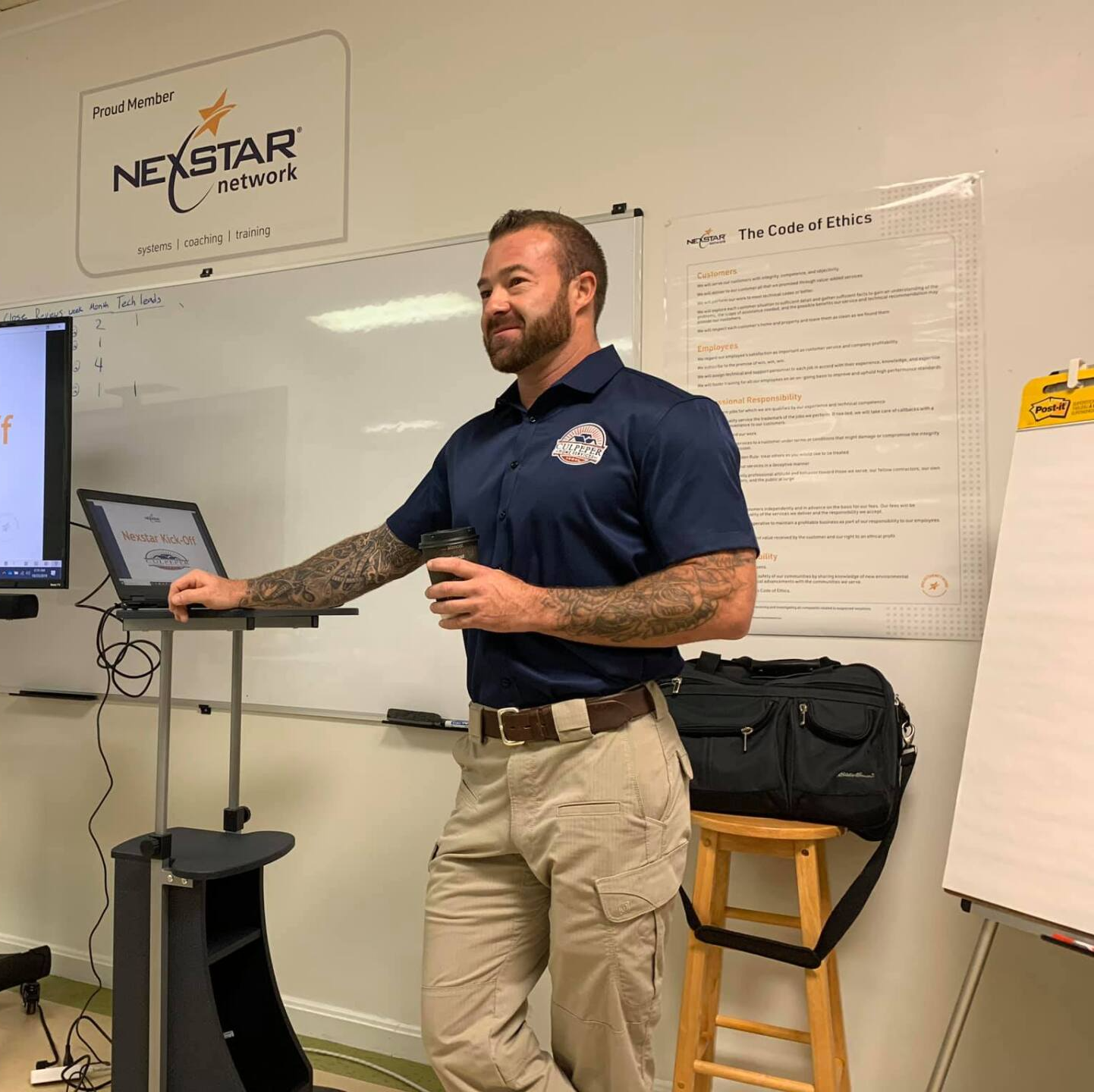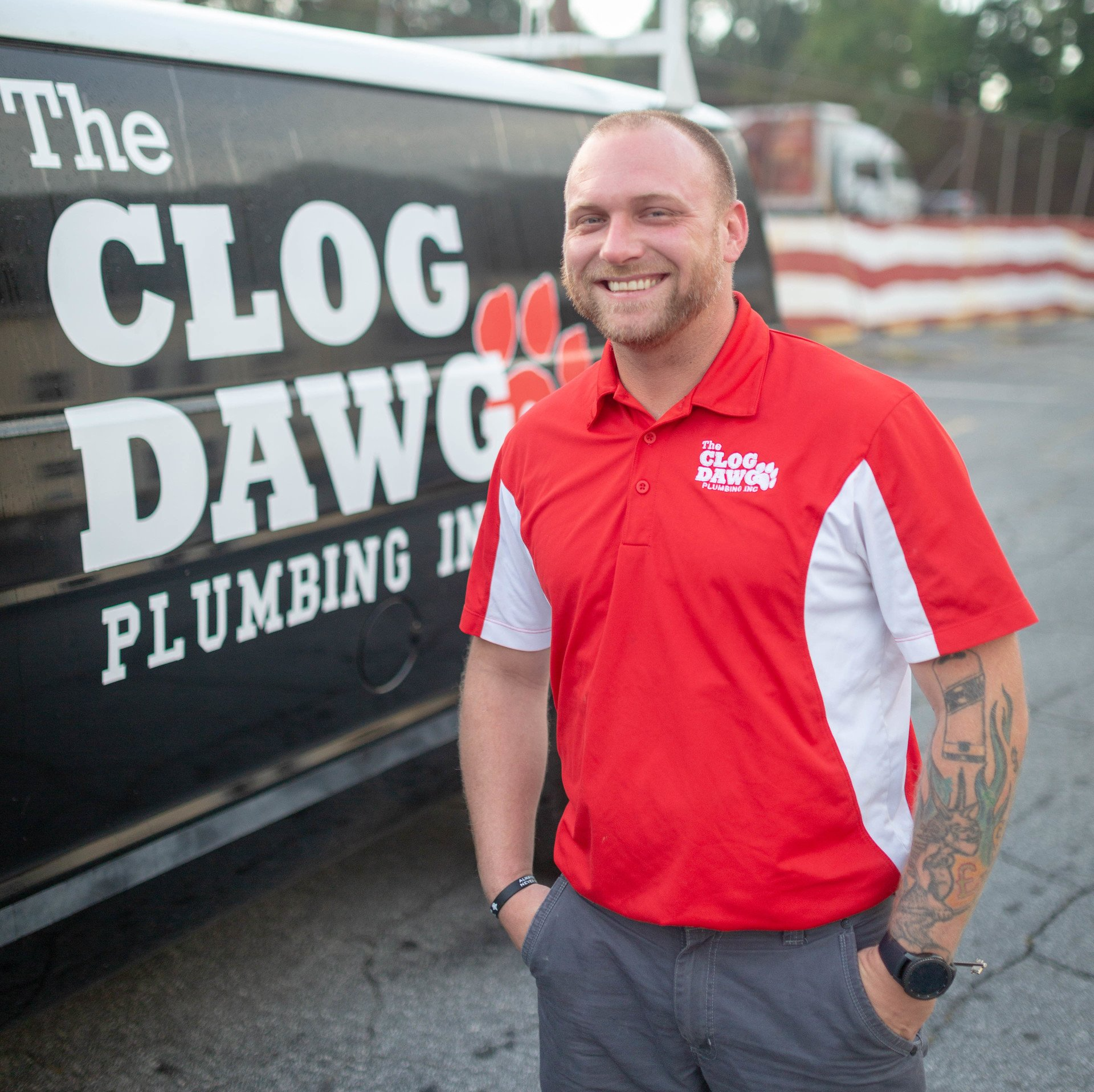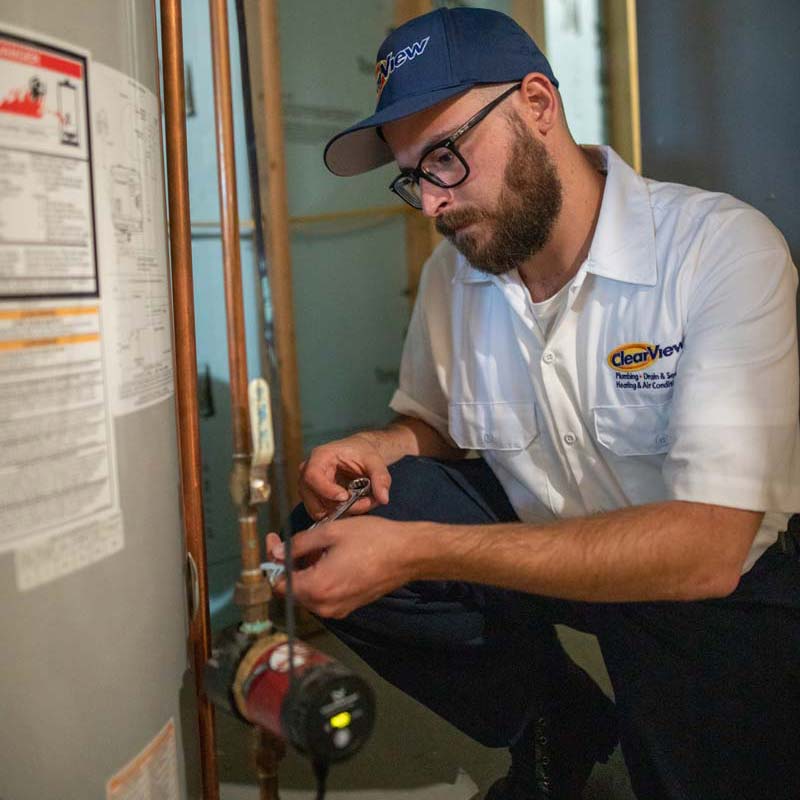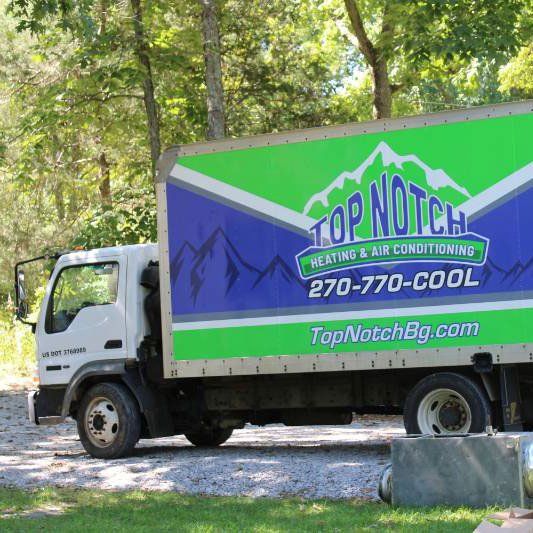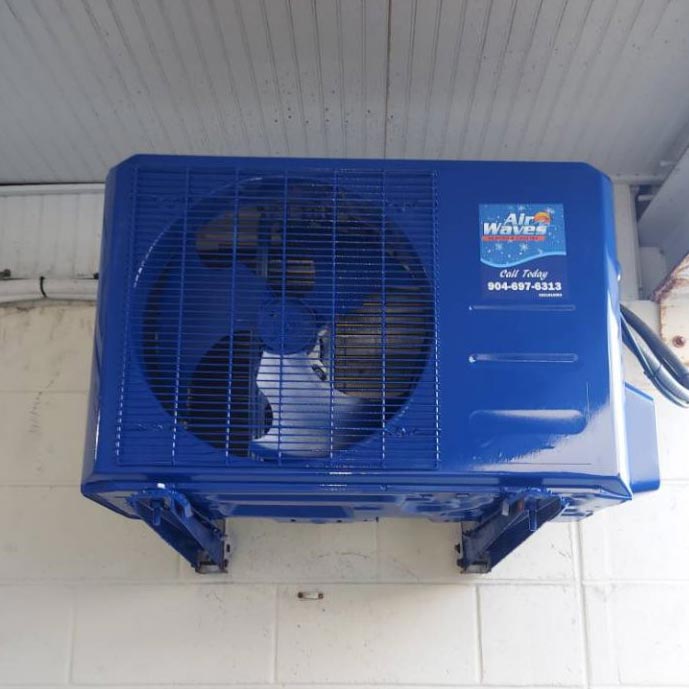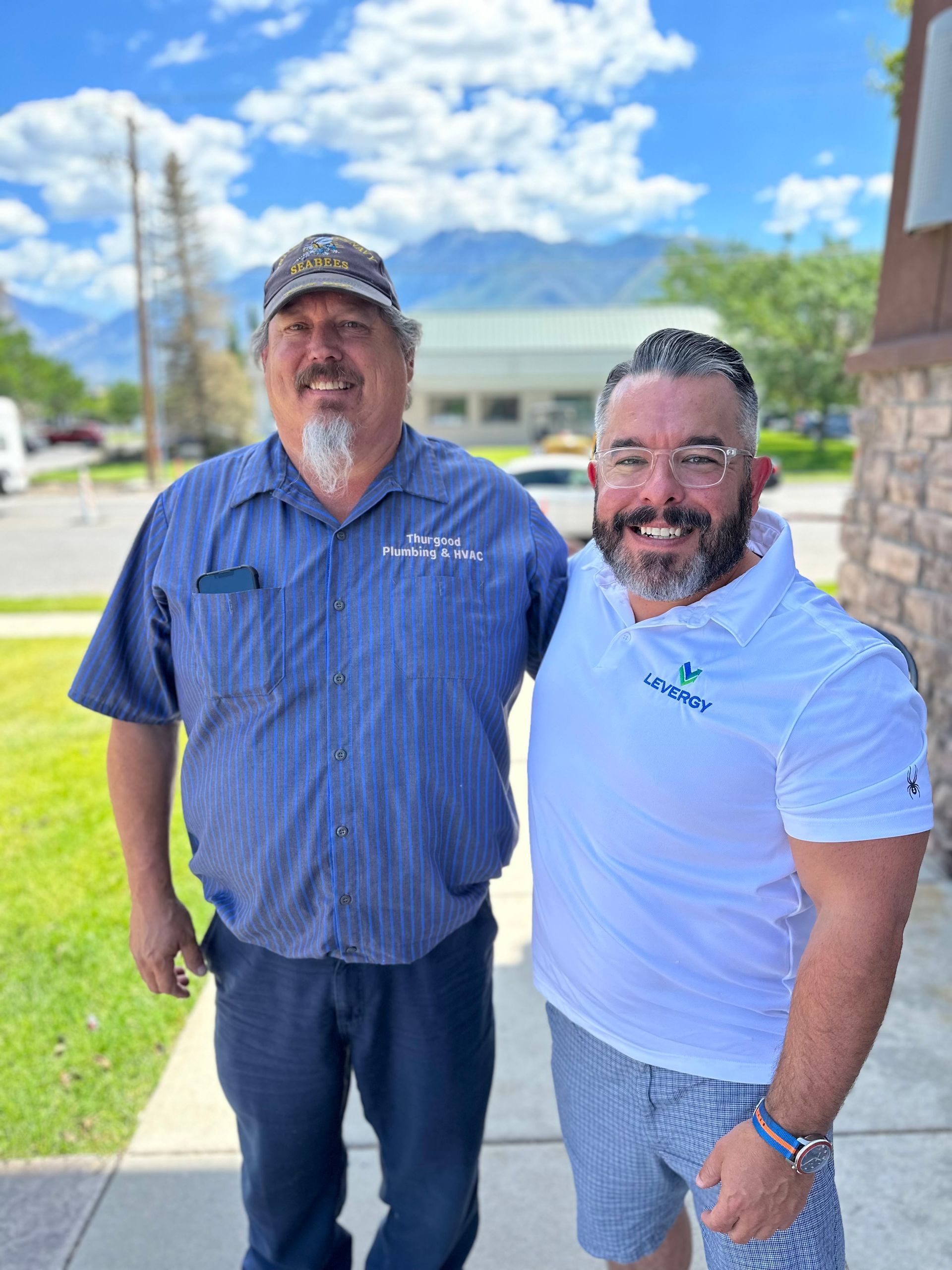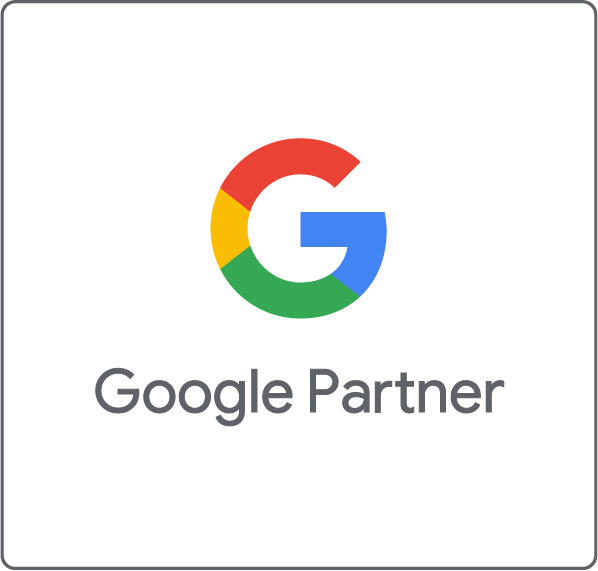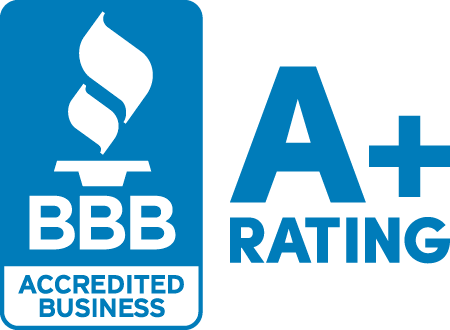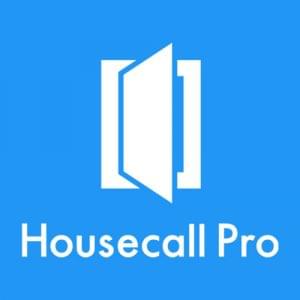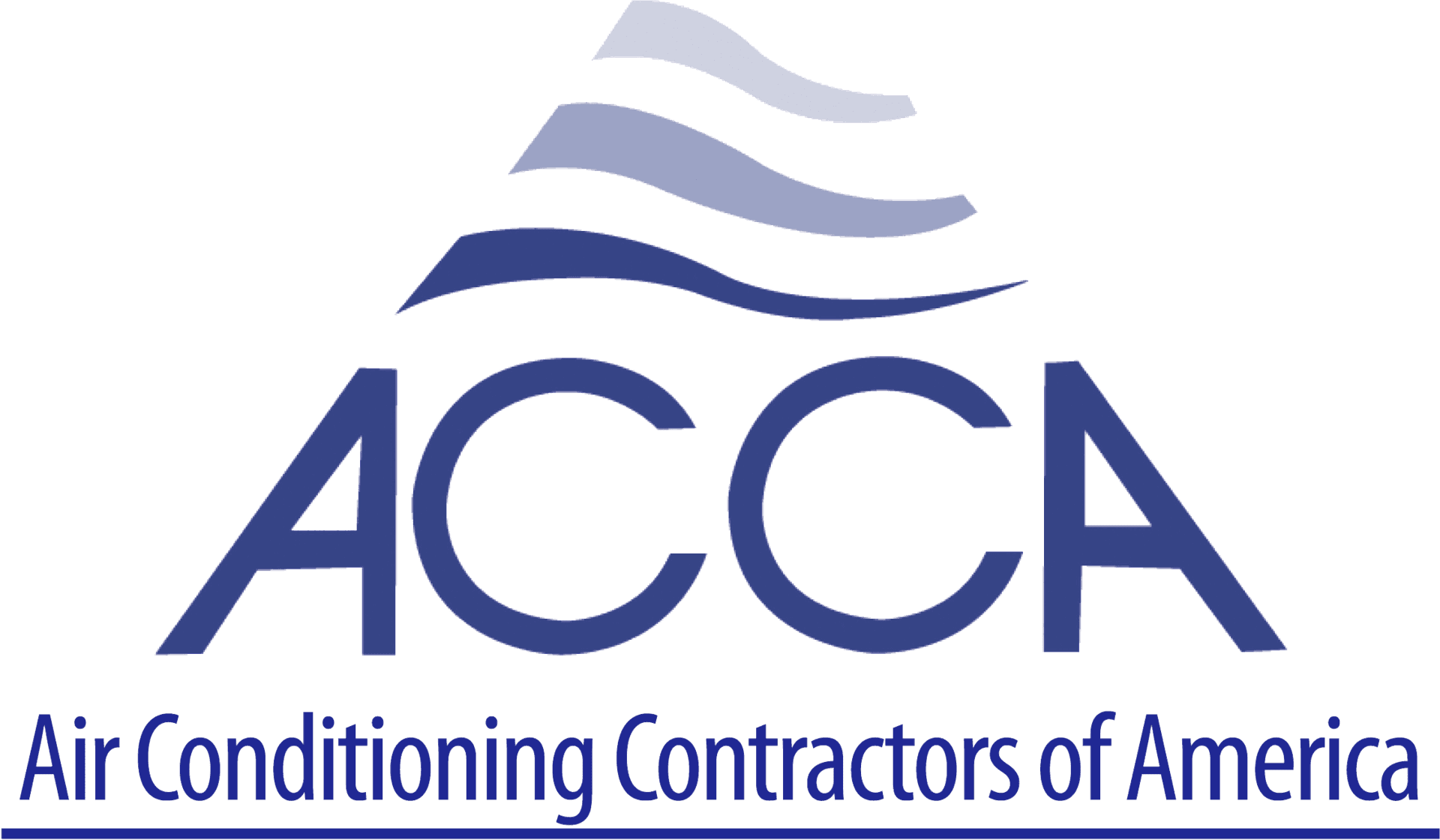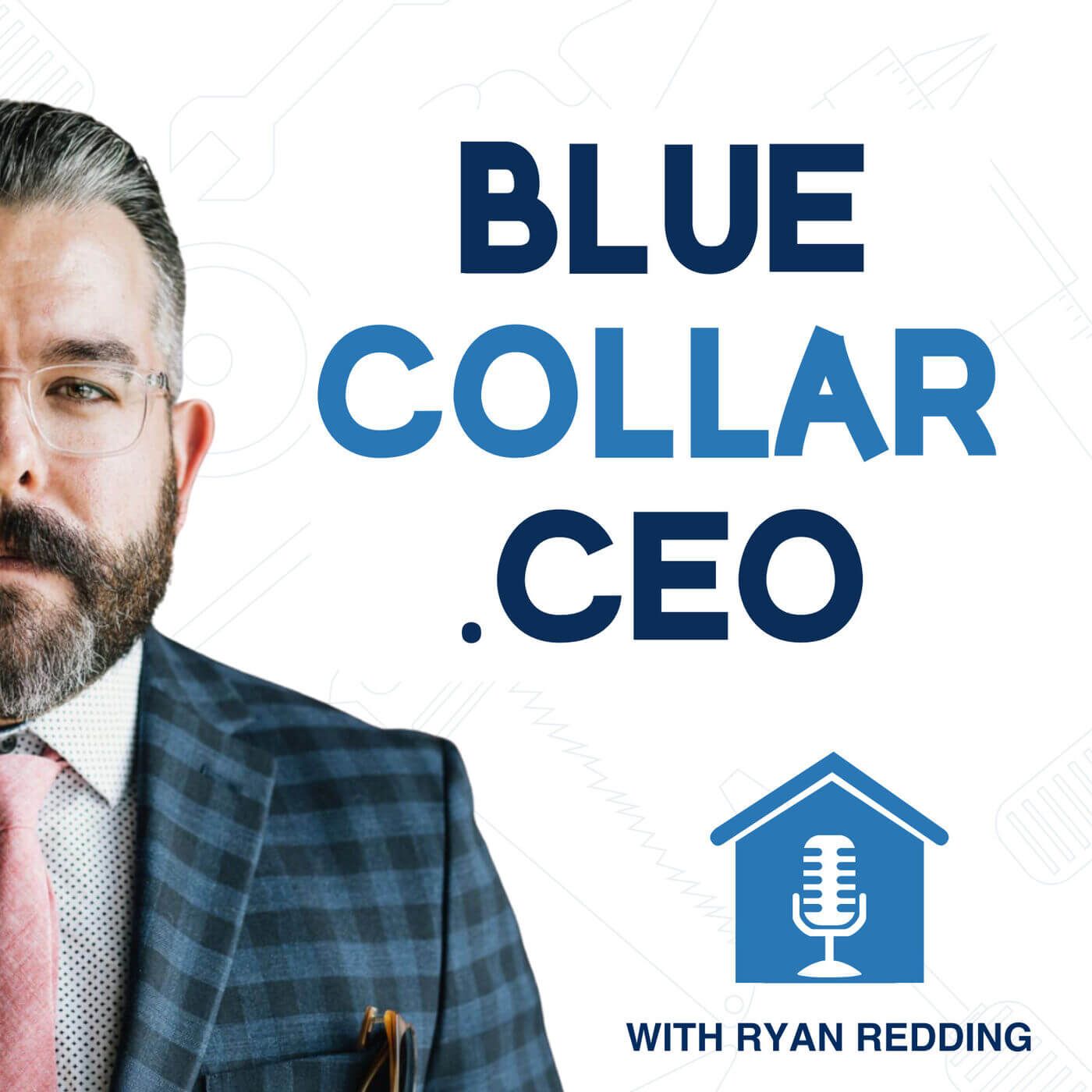The Biggest Changes on Google in 2024
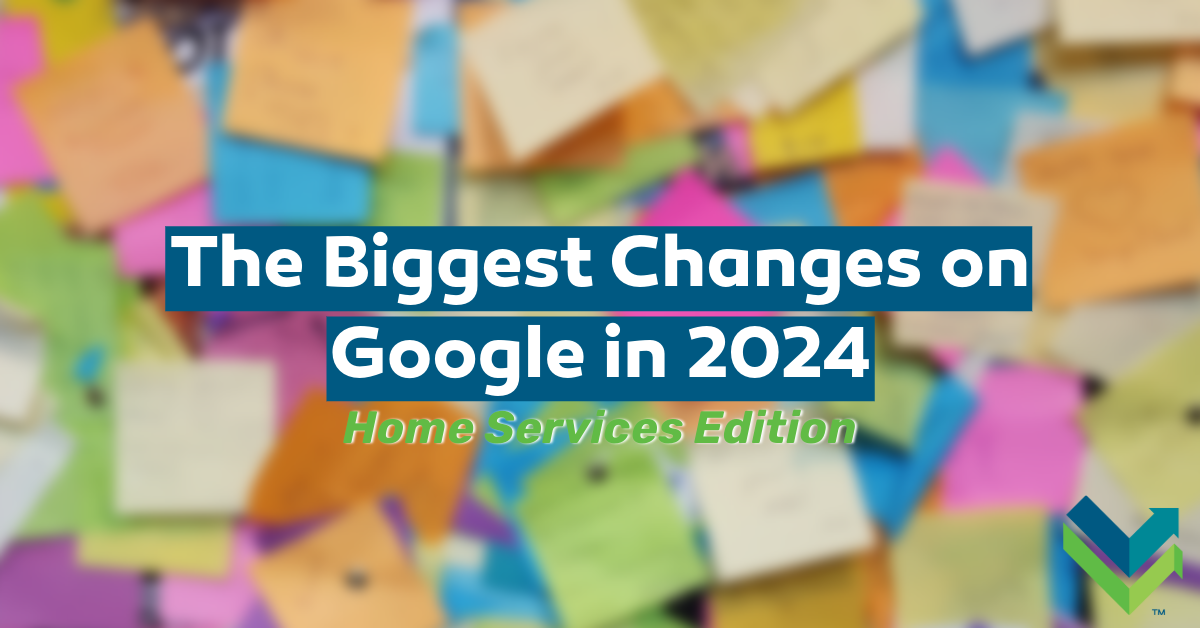
Why 2024 Is a Pivotal Year for Digital Marketing
Dang. 2024 was insane (for a lot of reasons).
If you’re in the plumbing, HVAC, electrical, roofing, or garage door industry, you already know how critical Google is for driving leads. With more than 90% of people using Google as their go-to source for finding local services, the platform holds immense power over how customers discover and choose businesses like yours. But what worked last year—or even six months ago—might not work today.
In 2024, Google introduced a series of significant updates across its ecosystem, including Google Search, Google Ads, Local Services Ads (LSA), and Google Business Profile (GBP). They’ve also launched their advanced Gemini AI platform, marking one of the biggest shifts in how businesses engage with customers online.
Our goal with this article is to help you understand these updates. We’ll explore how things used to work (“what life was like before”), explain the new landscape (“what’s changed”), and offer clear, actionable steps so you can stay ahead in this increasingly competitive space.
There's a lot to discuss. So let's get started.
Google Search Updates: Content is King (Again)
What Life Was Like Before
Google Search has long been the lifeline for local businesses, especially those in home services. For years, businesses followed a relatively predictable formula to rank in local search results: include the right keywords, optimize for location-based queries, build backlinks, and maintain a basic level of on-page SEO. It wasn’t uncommon for websites to rank well with content that was thin, generic, or repetitive as long as they had the technical foundations and backlinks to support them.
For instance, a plumbing company might have a simple page titled “Emergency Plumbing Services in Atlanta” with a brief 200-word description and a contact form. It didn’t necessarily need to offer much value—Google’s algorithms prioritized the presence of keywords over the depth of content.
Additionally, local SEO heavily relied on external factors like directory listings (Yelp, Angie’s List, HomeAdvisor) and Google My Business optimization. While content quality mattered, it wasn’t always the deciding factor, particularly for smaller, highly targeted service areas.
Voice search was on the rise, but most businesses hadn’t yet optimized for conversational, question-based queries like “Who’s the best plumber near me?”
For many, the formula boiled down to quantity over quality: produce more pages, target more keywords, and build more links. While this approach worked for years, it left gaps in user experience, as customers often struggled to find detailed, helpful answers to their specific problems.
What’s Changed
In 2024, Google made sweeping changes to how its search engine evaluates and ranks content. Two major shifts occurred this year:
- Core Algorithm Updates (March, August, November):
These updates reinforced Google’s commitment to EEAT (Experience, Expertise, Authoritativeness, and Trustworthiness). Google now scrutinizes the quality of content more intensely, prioritizing pages that provide genuine value, answer user questions in depth, and reflect expertise in the topic. For home service businesses, this means pages like “5 Signs Your Furnace Needs Immediate Repair” are more likely to rank than generic service descriptions.
- Enhanced Helpful Content System: This system now identifies and penalizes content that feels automated, generic, or overly optimized for keywords without providing real solutions. Pages that exist solely to rank, rather than to help users, are being downgraded in favor of content that is thorough, human-centric, and actionable.
Google is also prioritizing intent-based results. For example, a user searching for “how to stop a leaking pipe” might now see detailed guides, videos, and FAQs instead of simply being shown service pages.
Additionally, local intent has been integrated more seamlessly into search results. Google can now factor in a user’s location and behavior to tailor results, giving preference to businesses that are active online and frequently updated their Google Business Profile (GBP).
The result? Businesses relying on thin content or outdated SEO tactics are seeing drops in rankings, while those investing in high-quality, helpful, and user-focused content are climbing higher.
What You Can Do Now
To adapt to Google’s new focus on quality and user intent, here’s what you should prioritize:
- Revamp Your Website Content:
- Audit your service pages to ensure they’re not just lists of services but helpful resources. For instance, instead of “We fix water heaters,” write “Water Heater Repair: Common Problems and How We Fix Them in [City].”
- Add FAQs to address common customer concerns. Example: “What should I do if my AC stops working on a weekend?”
- Focus on Local Relevance:
- Create location-specific content that speaks directly to the unique needs of customers in your area. For example, write articles like “How Florida’s Humidity Affects Your Air Conditioner (And What to Do About It).”
- Build internal links between your location pages and service pages to guide users seamlessly.
- Invest in Multimedia:
- Add videos explaining common problems or showing your team at work. Google increasingly favors multimedia-rich pages, as they keep users engaged longer.
- Include infographics for visual learners—e.g., a diagram of the main components of a home HVAC system.
- Optimize for Voice Search:
- Rewrite content to match conversational queries. For example, “Affordable plumbers in Austin” could be rephrased as “What’s the most affordable plumbing company in Austin?”
- Include long-tail keywords that mirror how people ask questions aloud.
- Use Structured Data (Schema):
- Add FAQ schema to your pages so Google can display your answers directly in search results.
- Implement LocalBusiness schema to ensure Google understands your location, hours, and services.
Next Steps:
- Run a content audit to identify thin, low-value pages.
- Use tools like Google Analytics or Search Console to monitor bounce rates and adjust pages with high exit rates.
- Update all title tags and meta descriptions to focus on clarity and user intent. Example: “Affordable AC Repair in Phoenix | Same-Day Service Guaranteed.”
By prioritizing high-quality, user-focused content, you’ll align with Google’s evolving algorithm and position your business as the trusted local expert customers turn to first.
Google Ads (AdWords): Smarter AI, More Engagement
What Life Was Like Before
For years, Google Ads (formerly AdWords) was the go-to platform for home service businesses looking to generate leads through paid search. The process was straightforward but time-intensive. Businesses would identify target keywords like “emergency plumber near me” or “HVAC repair in Houston,” set bids for those keywords, and manually optimize campaigns based on performance metrics like click-through rates (CTR) and cost per click (CPC).
- Ad Copy & Format: Ad creatives were often static and generic: “Fast, Reliable Plumbing Services in [City]. Call Now!” While effective, these ads relied on basic text formats, with little room for interactivity or customization. Seasonal relevance—running furnace repair ads in winter or AC tune-ups in spring—had to be manually planned and adjusted.
- Targeting: Google Ads’ targeting relied heavily on manual audience selection, using demographic filters (age, income, location) and device types. Dynamic search ads existed but required significant oversight, as they often misfired with irrelevant queries. Keyword research was a labor-intensive process, requiring constant refinement to avoid wasted spend on irrelevant searches.
- Tracking Success: The reporting tools were useful but basic. Attribution often relied on last-click models, meaning you couldn’t always see the full customer journey. Many businesses struggled to connect their campaigns to actual conversions like phone calls or service bookings, leaving gaps in their ROI tracking. (Luckily, SearchLight solves this problem for lots of our clients.)
Biggest Pain Points:
- High CPCs for competitive keywords like “emergency plumber.”
- Difficulty managing campaigns at scale without dedicated marketing staff.
- Generic ad formats that didn’t differentiate local businesses from larger competitors.
While Google Ads was powerful, it was a manual-heavy tool that rewarded experienced marketers but penalized small business owners who lacked the time or expertise to optimize effectively.
What’s Changed in 2024
In 2024, Google revolutionized its advertising platform with AI-driven enhancements powered by its Gemini AI engine. These changes aim to make Google Ads more effective, automated, and accessible, especially for smaller businesses.
- AI-Powered Campaign Management (Performance Max):
Performance Max campaigns use machine learning to automate almost every aspect of your ad strategy. This includes ad placements (Search, Display, YouTube), targeting, bidding, and even creative recommendations. For example, instead of manually setting bids for keywords like “drain cleaning,” Google’s AI analyzes user behavior and adjusts bids in real time based on search intent.
For home service businesses, this means your ads are automatically shown to users more likely to convert—for instance, someone searching “fix clogged drain fast” in your service area during peak hours. - Interactive Ad Formats: Google introduced engaging ad formats like clippable coupons, price sliders, and video carousels. These formats encourage user interaction, making your ads more compelling. Imagine running an HVAC maintenance campaign offering $50 off for first-time customers with a coupon users can “clip” directly in the ad.
- Enhanced Targeting with AI Insights: Gemini analyzes data like user behavior, seasonality, and intent to improve targeting. Instead of bidding broadly on “roof repair,” Gemini might identify that users searching “roof leak after storm” are in urgent need and adjust bids accordingly. It can even prioritize high-intent users during peak seasons or in areas experiencing extreme weather events.
- Smarter Attribution Models:
Google Ads now offers enhanced attribution tracking, providing deeper insights into the full customer journey. For example, you can see whether a user clicked your ad, visited your site, and then called your office—all tied back to your campaign.
- Ad Copy Suggestions: AI now suggests ad headlines, descriptions, and visuals based on your goals. For example, it might recommend highlighting your 5-star Google reviews or including a customer testimonial in your ad.
While these changes make Google Ads more accessible and effective, they also raise the stakes. Businesses relying on outdated or manual-heavy strategies risk being outpaced by competitors using AI to optimize campaigns.
What You Can Do Now
To take full advantage of the 2024 Google Ads updates, here’s a step-by-step plan:
- Embrace Performance Max Campaigns:
Transition existing campaigns to Performance Max. These campaigns let Google handle placements, bidding, and targeting across multiple platforms, ensuring your ads appear where your customers are.
Input clear goals: Whether it’s generating leads, driving phone calls, or increasing service bookings, Performance Max works best when you define your objectives. - Test Interactive Formats:
Use clippable coupons for seasonal promotions like “10% Off Drain Cleaning During Winter Months.”
Add price sliders to showcase service tiers (e.g., “Basic Furnace Maintenance: $99 | Advanced Cleaning: $149”).
Create short, engaging videos for Display and YouTube ads. Examples include “How to Know If Your Roof Needs Repair” or “Top 5 HVAC Maintenance Tips.” - Refine Your Targeting:
Use Gemini’s insights to adjust your campaigns based on seasonal demand. For example, HVAC companies can ramp up ads during heatwaves or cold snaps.
Focus on high-intent keywords. Replace generic phrases like “HVAC repair” with intent-driven queries like “24-hour furnace repair near me.” - Optimize Ad Copy:
Include urgency in your headlines. Example: “Emergency Plumbing Services in Houston—We’re Open 24/7!”
Highlight trust signals like 5-star reviews, certifications, or “family-owned since 1995.”
Use customer-centric language. Instead of “We fix pipes,” say, “Get Fast, Affordable Plumbing Repairs You Can Trust.” - Track Performance:
Use Google’s enhanced attribution tools to monitor how ads drive leads. Look beyond clicks—track calls, form submissions, and service bookings.
Set up call tracking to tie phone leads directly to your campaigns. - Monitor AI Recommendations:
While AI can optimize your campaigns, always review its suggestions. Ensure ad copy aligns with your brand voice, and adjust bidding strategies if needed.
Next Steps:
- Set a monthly Google Ads budget that allows room for experimentation (e.g., $1,000 to test Performance Max campaigns). Pro tip: be sure to measure your ROI/ROMS with this test.
- Create a seasonal advertising calendar to plan promotions ahead of time.
- Schedule regular reviews (bi-weekly or monthly) to evaluate campaign performance and make adjustments.
Tip for Landing Pages:
Ensure the pages your ads point to are optimized for conversions. Include:
- A clear headline (e.g., “Fast and Reliable Roof Repairs in [City]”).
- A strong call-to-action (CTA) like “Schedule Your Free Estimate Today.”
- Trust badges, customer testimonials, and visible contact information.
By leveraging Google Ads’ AI-driven tools and interactive features, you can create campaigns that not only reach more potential customers but also engage them at every step of their decision-making journey.
Local Services Ads (LSA): Automation, Desktop Management, and Integration
What Life Was Like Before
Local Services Ads (LSA) were a game-changer when first introduced, providing home service businesses with a cost-effective way to generate high-quality leads. Unlike traditional pay-per-click ads, LSA operates on a pay-per-lead model, meaning businesses only pay for verified leads that match their services. This system leveled the playing field, giving small businesses the ability to compete against larger brands with deeper pockets.
- The LSA Mobile App: Managing LSAs was often done through Google’s convenient mobile app, which allowed business owners to review leads, dispute invalid ones, and adjust bids on the go. This was especially helpful for busy owners of plumbing, HVAC, or electrical companies who often wore multiple hats and needed flexibility.
- Lead Dispute Process: The lead dispute system, while useful, required manual intervention. Businesses had to spend time reviewing each lead to determine if it was valid. For example, if a lead came in for a service the business didn’t offer, like “solar panel installation,” they’d have to manually dispute it to avoid being charged.
- Targeting and Bidding: The targeting was straightforward but lacked the precision of more advanced platforms. While businesses could specify service areas and types, many leads were broad, and cost-per-lead often fluctuated without clear rhyme or reason. Bidding was also a largely manual process, requiring regular adjustments to stay competitive.
While LSAs were an excellent source of leads, the platform’s manual nature could be time-consuming, and its features weren’t as robust as other advertising tools.
What’s Changed in 2024
In 2024, Google introduced several key updates to Local Services Ads aimed at improving efficiency, reducing administrative burdens, and ensuring businesses meet higher standards for trust and accuracy.
- Automated Lead Disputes. One of the biggest pain points of LSAs has been the manual lead dispute process. In July 2024, Google rolled out an AI-driven system to handle disputes automatically. The system uses machine learning to identify invalid leads—such as those outside your service area or for services you don’t offer—and flags them for review. This has significantly reduced the time businesses need to spend managing lead disputes.
For example, if your business only offers plumbing services and a lead comes in for HVAC installation, the AI will detect the mismatch based on your profile and dispute it automatically. Businesses are notified of the dispute’s outcome, streamlining the entire process. - Desktop-Only Management. Starting in January 2025, Google will sunset the LSA mobile app, requiring all LSA management to be done through desktop. While this shift allows for more advanced features and reporting capabilities, it removes the convenience of managing campaigns on the go. Google claims the desktop platform will offer more robust tools for lead tracking, performance insights, and bidding adjustments.
- Mandatory Google Business Profile Integration. In late 2024, Google made it mandatory for all LSA advertisers to have a verified Google Business Profile (GBP). This integration ensures that the information displayed in LSAs (such as hours, location, and services) matches what’s in your GBP, reducing discrepancies and improving user trust. For businesses with incomplete or outdated profiles, this new rule has created an additional layer of accountability.
- New Bidding Options. Target Cost-Per-Lead (tCPL) Google introduced the Target Cost-Per-Lead (tCPL) bidding system, allowing businesses to specify how much they’re willing to pay for a lead. This gives businesses greater control over their budgets and helps them avoid overspending in competitive markets. For example, a roofing company might set a tCPL of $50 for roof inspections but $200 for full roof replacements, reflecting the higher value of the latter.
While these updates improve efficiency and transparency, they also raise the bar. Businesses that don’t adapt to these changes—such as ensuring their GBP is verified and accurate—risk losing access to LSAs altogether. Additionally, the shift to desktop management means business owners will need to carve out dedicated time for campaign oversight.
What You Can Do Now
To thrive under the new LSA updates, here’s what you should focus on:
- Streamline Lead Management with AI Tools
- Monitor Disputed Leads: While Google’s AI automates the process, it’s not perfect. Review disputed leads periodically to ensure the system is working accurately. If the AI misses something, you can still manually intervene.
- Set Clear Service Areas: Make sure your service areas and offered services are accurate in both your LSA settings and your Google Business Profile to minimize irrelevant leads.
- Prepare for Desktop Management
- Familiarize Yourself with the Platform
- Spend time exploring the desktop dashboard now to get comfortable before the mobile app is retired in 2025.
- Delegate Campaign Oversight: If you can’t manage LSAs regularly, assign the task to a trusted team member or hire a digital marketing agency to oversee your campaigns.
- Optimize Your Google Business Profile
- Verify Your GBP: If you haven’t already, complete the verification process immediately. Google prioritizes verified businesses, and it’s now a requirement for LSAs.
- Update All Details: Ensure your hours, contact information, and services are accurate. Discrepancies between your GBP and LSA settings can hurt your credibility.
- Add Photos and Reviews: High-quality images and positive customer reviews improve your profile’s appeal and encourage more leads to click on your ad.
- Leverage tCPL Bidding
- Analyze Your Lead Value: Determine how much a lead is worth for each service you offer. For example, a water heater repair might generate less revenue than a full installation, so adjust your bids accordingly.
- Set Realistic tCPL Goals: Start with a mid-range bid and adjust based on performance. Monitor metrics like cost-per-lead and conversion rates to find the sweet spot.
- Create a Strong Profile Description
- Use specific, customer-focused language in your LSA profile. For example: “We’re your trusted 24/7 emergency plumbing team in Denver. Our licensed experts handle everything from burst pipes to clogged drains—fast, reliable, and affordable.”
- Take Advantage of Seasonal Trends
- Run seasonal promotions through LSAs. For example, offer discounts on furnace tune-ups in fall or roof inspections after a hailstorm.
- Update your profile to reflect these promotions, adding urgency to your ads.
Next Steps
To make the most of the new LSA updates:
- Verify and optimize your Google Business Profile.
- Familiarize yourself with desktop management and delegate responsibilities as needed.
- Take advantage of tCPL bidding to maximize ROI while controlling costs.
- Monitor the automated lead dispute system to ensure it’s performing accurately.
SEO Tip for Your LSA Profile:
Incorporate local keywords and trust signals. For example:
- Headline: “Top-Rated Roof Repair Services in [City]”
- Description: “Family-owned and operated, serving [City] for 20+ years. Fully licensed and insured. Call today for a free estimate!”
By embracing automation, optimizing your GBP, and adjusting your bidding strategies, you can ensure that LSAs remain one of your most reliable sources of high-quality leads.
@levergy.io To stand out in local searches, it’s all about optimization. 📈 From Google Business Profile tweaks to managing reviews, our data-driven approach ensures your home services business is front and center. Want to generate more leads and grow locally? Reach out to Levergy—the agency where you actually get what you pay for. #googlerank #homeservicebusiness #servicebusiness #tradesbusiness #marketingstrategy ♬ original sound - Levergy
Google Business Profile (GBP): The Backbone of Local SEO
What Life Was Like Before
Google Business Profile (formerly known as Google My Business) has long been a critical tool for home service businesses. Its primary purpose was to help local businesses appear in Google’s "Local Pack" and Maps results, providing a snapshot of essential business details like contact information, reviews, and hours of operation. For many plumbing, HVAC, electrical, and roofing companies, having a GBP meant a steady stream of local leads—especially from mobile users searching for “near me” services.
- Basic Profile Maintenance: While having a GBP was important, many businesses took a “set it and forget it” approach. Once the profile was created, it was rarely updated. As long as the basic information was accurate, businesses expected it to perform with minimal oversight.
- Limited Impact on Rankings: In the past, GBP alone wasn’t enough to dominate search rankings. Businesses relied on directory listings, backlinks, and keyword-optimized websites to compete in search results. GBP acted more as a digital business card than a dynamic part of their marketing strategy.
- Reputation Management: Customer reviews were always a critical factor in GBP performance, but the platform didn’t provide much guidance or structure around responding to reviews. Many businesses ignored negative reviews or responded only sporadically, missing opportunities to build trust with potential customers.
- Insights and Data: GBP provided basic analytics, such as how many people viewed your profile or clicked on your phone number. However, deeper insights—like tracking specific customer actions or tying GBP engagement to actual leads—were limited.
In summary, GBP was important but often treated as secondary to broader SEO and advertising efforts. It served as a functional listing but wasn’t always leveraged to its full potential.
What’s Changed in 2024
In 2024, Google made significant updates to Google Business Profile, transforming it into a dynamic, must-manage tool for local businesses. GBP is now central to not only local SEO but also advertising campaigns, customer engagement, and trust-building.
- Mandatory Integration with LSAs. As of November 2024, a verified Google Business Profile is required to run Local Services Ads. This integration ensures consistency between your GBP and LSA information, including your services, hours, and contact details. If your GBP is outdated or unverified, your LSA campaigns will be paused.
This change underscores GBP’s importance as the foundation of your online presence. It’s no longer optional to manage your profile—it’s mandatory if you want to succeed with LSAs or rank well in local searches. - Enhanced Verification and Spam Prevention. Google has tightened its verification process to combat fake profiles and spam listings. Businesses must now provide more detailed proof of ownership, such as utility bills, incorporation documents, or even video verification of their location. While this process adds an extra step, it ensures that only legitimate businesses appear in search results, increasing consumer trust.
- Advanced Analytics. GBP now offers deeper insights into customer behavior. You can see:
How users find your profile (e.g., direct search vs. discovery search).
Actions taken by users (e.g., phone calls, website clicks, direction requests).
Engagement with specific profile elements, such as photos, Q&A, and posts.
These insights allow businesses to refine their strategies and focus on the most effective elements of their profile. - Dynamic Features. Google has added several new features to GBP, including:
Posts and Deals: Businesses can share updates, promotions, and seasonal offers directly on their profile.
Product Listings: For businesses with defined services, you can now list them as “products” with descriptions and pricing.
Q&A Expansion: Customers can ask questions directly on your profile, and businesses can preemptively add FAQs to address common inquiries.
Photos and Videos: GBP now emphasizes visual content, making high-quality images and videos more impactful. - Trust Signals and Reviews. Reviews remain a cornerstone of GBP success, but Google now highlights businesses that actively respond to reviews, showcasing them as “responsive.” Ignoring negative reviews or failing to engage with customer feedback can hurt your profile’s visibility and trustworthiness.
- Local SEO Integration. Google is prioritizing GBP activity as a key ranking factor for local SEO. Profiles that are regularly updated, feature fresh content, and actively engage with users are more likely to appear in the Local Pack.
For home service businesses, these changes mean GBP has evolved from a static listing to a dynamic marketing tool. If you’re not actively managing your profile, you’re missing out on potential leads and risking your search visibility.
What You Can Do Now
To maximize your Google Business Profile in 2024, follow these steps:
- Complete the Verification Process
Ensure your GBP is fully verified. If Google requests additional documentation, respond promptly to avoid disruptions to your visibility.
Double-check that all information—address, phone number, website, hours—is accurate and matches what’s on your website and other platforms. Consistency is key. - Optimize Your Profile
Description: Write a compelling description of your business. Use natural language to highlight your services and local expertise. Example: “Serving Austin for over 20 years, we specialize in 24/7 plumbing repairs, water heater installations, and drain cleaning.”
Photos: Upload high-quality images of your team, equipment, and completed jobs. Update these photos regularly to show customers you’re active and engaged.
Categories: Select the most relevant business categories for your services. For example, a roofing company might choose “Roofing Contractor” and “Storm Damage Repair.” - Post Regular Updates
Use Google Posts to share seasonal promotions, community involvement, or helpful tips. Example: “Don’t wait for a burst pipe this winter—schedule a plumbing inspection today!”
Highlight limited-time deals with urgency, such as “10% off all HVAC maintenance appointments booked before March 31.” - Respond to Reviews
Respond to all reviews—both positive and negative—within 24-48 hours. For negative reviews, apologize and offer a solution, showing potential customers that you’re committed to service.
Encourage happy customers to leave reviews by sending follow-up emails after service appointments. - Use Insights to Refine Your Strategy
Review GBP analytics weekly to see what’s driving engagement. Are users clicking on your phone number, requesting directions, or viewing specific photos? Use this data to double down on what works.
Track engagement spikes to understand when users are most active. For example, if you notice a surge in profile views during storms, prepare to run promotions for emergency services. - Leverage Dynamic Features
Add an FAQ section to address common questions like “Do you offer financing?” or “What’s your response time for emergency calls?”
List your services as products with detailed descriptions and starting prices. This transparency builds trust and encourages conversions.
Use videos to demonstrate expertise. For example, create a short clip explaining how to check for roof leaks after heavy rain. - Build Links Between GBP and Your Website
Include links to specific landing pages on your website from your GBP. For example, if a user clicks “Learn More” about “Drain Cleaning,” take them directly to your drain cleaning service page.
SEO Tip: Optimize your GBP description with local keywords and trust signals. Example:
Headline: “Top-Rated HVAC Services in [City]”
Description: “Family-owned and operated, providing affordable AC repair, furnace installation, and maintenance in [City] for 15+ years. BBB A+ rated.”
Next Steps
To fully capitalize on Google’s GBP updates:
- Verify and update your profile immediately.
- Make GBP a living, breathing part of your marketing strategy with regular updates and user engagement.
- Use insights to continually refine your profile and adjust your approach.
With GBP now central to local SEO, LSAs, and customer trust, it’s no longer just a “nice-to-have.” It’s the backbone of your online presence. Invest time and effort into optimizing your profile, and the rewards—more calls, more leads, and more bookings—will follow.
Turning Change Into Opportunity
2024 has been one of the most disruptive year for how Google connects home service businesses with customers. From the content-focused updates in Google Search to the AI-driven efficiencies in Google Ads, and the enhanced capabilities of LSAs and GBP, every change represents an opportunity for businesses willing to adapt.
The takeaway? These updates aren’t hurdles—they’re stepping stones. By focusing on quality, authenticity, and customer engagement, your business can thrive in Google’s evolving ecosystem. Take the next step: audit your online presence, implement these strategies, and dominate your local market.
Now’s the time to act. Let’s make 2025 the year your business grows stronger, smarter, and more successful than ever. Click here to schedule your free initial conversation with our team.
Was This Helpful?
Sign up here, and we'll automatically email you as we publish new articles that you may find useful.
Was This Helpful?
As Seen In:
Is your website helping or hurting your SEO efforts? Find out now for free.
We've got give-a-damn for days.
When my team talks with new clients, we hear a ton of frustration, overwhelm, and general fed-up-ness.
I'm guessing you can relate.
Maybe you've been trying to figure out all this marketing stuff on your own OR you've handed a crap-ton of money to an "expert" for no apparent reason.
Your phones still aren't ringing like they should.
Your advertising still isn't performing like you expected.
Your website's still not ranking or converting like it needs to.
You can't figure out why... and/or your current marketing "partner" isn't 'fessing up.
We think you deserve better.

Ryan Redding
CEO Levergy
Author of The Book on Digital Marketing for Plumbing and HVAC Contractors
Here's how we'll get you more plumbing, HVAC, electrical, garage door, roofing, or other home service leads:

Tell us what's keeping you up at night.
Let's get on a call so you can tell us where your business is and where you want to go. We'll follow-up with a free, comprehensive assessment and actionable tips.

We'll help you fix it.
If you like what you see so far, we'll put together a customized plan with transparent, flat-rate pricing—and then get to work growing your business.

So you can breathe easy.
Have peace of mind knowing you have a true partner on your side who cares about your success as much as you do.
What you get is important.
How you're treated is what sets us apart.
Culpeper Home Services
"... they always go above and beyond the call of duty. I'm impressed with their work ethic, loyalty, and integrity."
- Russell Furr, President
The Clog Dawg
"[Levergy] understood my specific needs and got the work done—bypassing all the unnecessary nonsense. And now business is booming!"
- Steven Douglass, President
Your mileage may vary.
Better results are here.
Discover how to stop wasting money on marketing that doesn't work, and make your phone ring off the hook.
